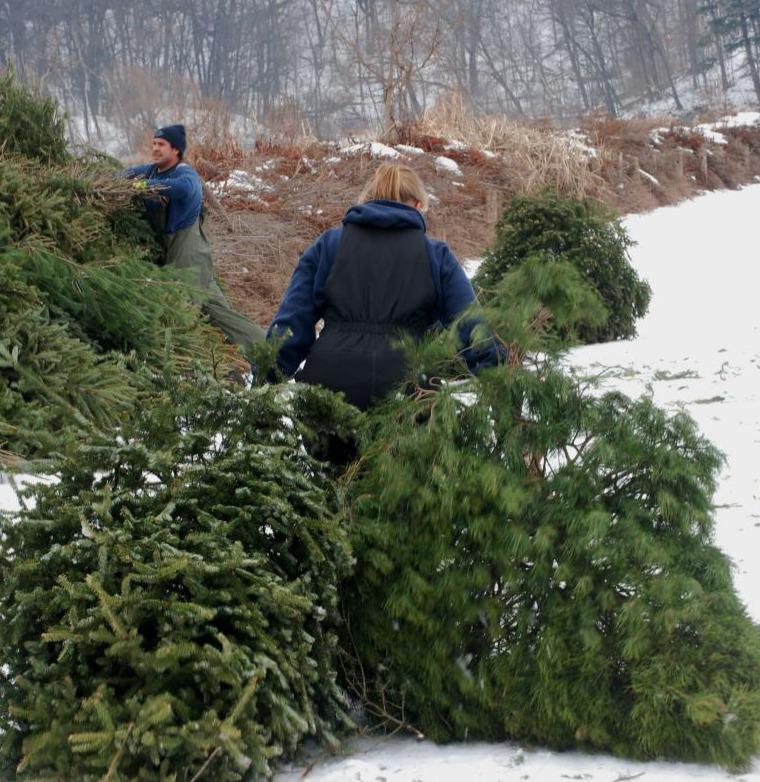
Discarded Christmas trees used as barrier for Asian carp. Image: Angelica A. Morrison
By Angelica A. Morrison
This story originally appeared on Great Lakes Today and is republished here with permission.
Canada’s Royal Botanical Gardens sit near the western end of Lake Ontario, just a short drive from the U.S. border. When the weather is warm, visitors come to see acres of gardens with roses, lilacs and other collections in bloom.
In the winter, it’s much quieter. But scientists stay busy, protecting wetlands from destructive carp. And they’re using an unusual weapon: Christmas trees.
Photo Gallery: Discarded Christmas trees used as barrier for Asian Carp
Ecologist Andrea Court walks across Grindstone Creek, which is frozen solid. In each hand is a discarded Christmas tree stripped of all of its festive ornaments.
Holding the base of the trunks, she drags the trees behind her, leaving a pathway of twigs, pine needles and pieces of brown bark. Her face is red from exposure to temperatures that hover near the freezing mark.
“This job is very weather-dependent, so you go when you can,” she says.
Waiting for her at the center of the ice is Kyle Mataya, a wetland restoration assistant. He’s standing along a berm of trees that stretches across the creek. It’s nearly three feet high and extends about 300 yards.
He grabs the trees from Court and starts to layer them on top of old decaying ones.
“I try to toss them on top,” he says. “I just basically build up the spots that got low from over the years and start from the bottom up, kind of like when you’re shingling a roof. You make sure there’s no holes and kind of plug all the gaps.”
The Christmas tree berm was created around 1999 to keep Common Carp out of the marsh. Every year, the team puts out a call for more trees. This year, the goal was to collect just over 3,000 trees; so far, they’ve got about 1,400.
“You don’t want to use any man-made or unnatural materials, as the trees will just break down and compost and build on themselves overtime,” he says.
Photo Gallery: Mediterranean and cactus exhibits at Royal Botanical Gardens
Using recycled trees, isn’t uncommon. Trees have been repurposed in New York for erosion control. And in Wisconsin, they were used to create a home-like setting for animals at a wildlife center.
Ecologist Jen Bowman leads the Christmas tree berm project. She says before the berm was built, carp did a lot of damage.
“They feed by going through the marsh,” she says. “They suck up the bottom sediment that’s very soft, and they eat organisms that live in the mud. So, they’re digging up around the roots of the vegetation, they end up killing the vegetation.”
The Common Carp was introduced to the Great Lakes in the 1800s. It’s a type of Asian Carp. But, it hasn’t received as much attention as other varieties like the silver carp, known for leaping out of the water.
“So they’ve been here for a long time, people consider them naturalized, but they’re really wetland destroyers,” Bowman says.
So, does the wall of trees really keep the carp out? Court says yes, but it’s not foolproof.
“They’re by no means a permanent wall,” she says. “We have other animals that tunnel through them like beavers and muskrats, so those create tunnels through the berm that fish can get through.”